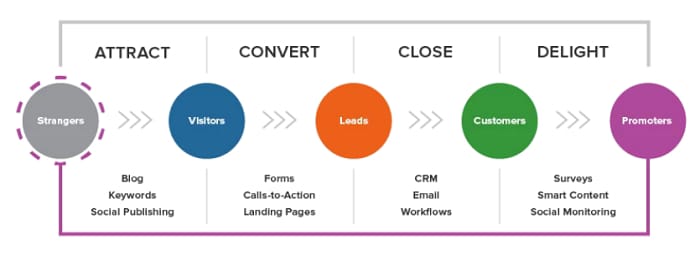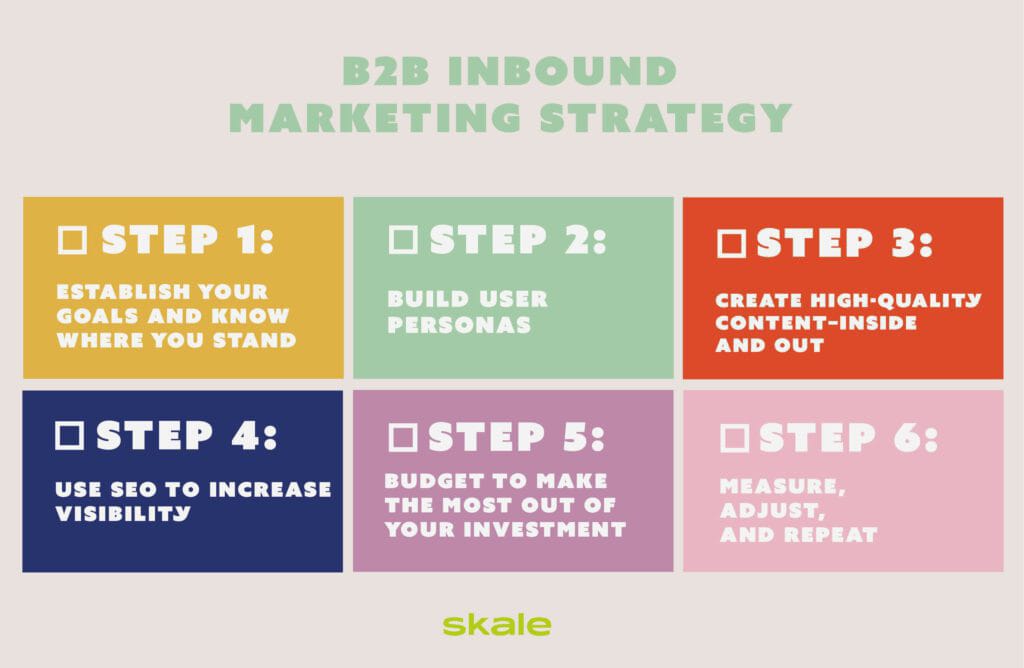
Inbound marketing has become a game-changer for B2B startups. Rather than pushing messages out and hoping someone responds, inbound means earning attention by delivering value. With the buying process in B2B often longer and more complex, startups need cost-effective ways to reach, engage, and convert decision-makers. By aligning with how prospects search, think, and act, inbound strategies help you attract the right audience, convert them into leads, and build long-term relationships. In this article, you will learn what inbound marketing means in a B2B context, how to build the foundation, and which tactics work best — from content and SEO to automation and measurement.
Understanding Inbound Marketing for B2B Startups

Inbound marketing in a B2B setting means creating content, experiences, and workflows that line up with the potential customer’s journey. It is less about interrupting someone and more about being found when they need help.
Outbound marketing, such as cold calls or pushy ads, tends to be expensive and less effective when selling to businesses with longer decision cycles. In contrast, inbound focuses on attracting prospects by answering their questions, offering insights, and building trust.
The Inbound Methodology: Attract → Engage → Delight
- Attract: Get the right people in front of your brand via content, SEO, and social.
- Engage: Provide solutions and conversations that match their needs and stage in the journey.
- Delight: After conversion, continue to deliver value so customers become promoters of your brand.
In B2B startups, where there are multiple stakeholders, longer sales cycles and high purchase value, inbound marketing helps you build credibility and nurture leads over time rather than trying to force a quick sale.
Defining Your Target Audience and Buyer Personas
Before jumping into tactics, you must establish a solid foundation. That starts with knowing who you’re targeting and what problem you solve for them. Buyer personas are semi-fictional representations of your ideal customers: their role, pain points, goals, buying habits, and typical objections. Crafting accurate personas helps you tailor content and messaging to resonate with your real audience.
Steps to Create Personas
- Research your market segments: company size, industry, job titles, and challenges.
- Interview current customers, prospects, and engage internal teams (sales, support) to gather insights.
- Develop 2-4 key personas, outlining their objectives, stumbling blocks, channels they use, and decision criteria.
- Link personas to your content strategy: what topics will each persona search for? What keywords will they use? What medium suits them?
For a B2B startup, a persona might be “IT Director at a mid-sized company seeking better data security”. Another might be “Head of Operations at a manufacturing firm evaluating automation tools”. Your content, tone, and channels should differ accordingly.
Core Inbound Marketing Tactics for B2B Startups

Here, we dig into the actual tactics that drive inbound in the B2B startup world. These tactics work best when grounded in your personas and brand foundation.
Content Marketing
Content is the heart of inbound. But for B2B startups, it must be strategic and aligned to where your audience is in their journey. Use thought-leadership articles to build credibility. Create white-papers, case studies, or ROI calculators for deeper persuasion. Host webinars or video explainers for complex solutions.
Best practices:
- Focus on the buyer’s pain points rather than just your features.
- Use storytelling or real data when possible to differentiate.
- Map content types to funnel stage: early stage = educational (e.g., “what is…”), mid stage = comparative (“how to evaluate…”), late stage = decision-oriented (“why choose product X”).
- Promote content via owned and earned channels (blog, email, guest posts) and keep optimizing it over time.
Search Engine Optimization (SEO)
For many B2B startups inbound starts with being found online. SEO helps your content rank and get discovered when prospects search for solutions you provide.
Key SEO elements:
- Keyword research: find terms your persona uses, including long-tail/question style.
- On-page: title tags, headers, meta descriptions, internal linking, and clean URL structures.
- Technical/Performance: site speed, mobile friendliness, structured data (schema) if applicable.
- Off-page: building meaningful links from industry sites, guest posts, or partner websites.
- Content funnel alignment: target top-of-funnel, middle-funnel, and bottom-of-funnel keywords.
Because B2B solutions often have niche queries, you can gain traction by picking less-competitive keywords relevant to your domain rather than battling for broad generic terms.
Social Media Marketing
Although social media often evokes B2C images, B2B startups can leverage social platforms effectively — particularly platforms like LinkedIn, Twitter (X), and niche communities.
Best approaches:
- Share educational content from your blog, white-papers, and webinars.
- Use employee advocacy: encourage team members to share their take on your content.
- Use social listening to see what topics your personas are discussing.
- For deeper engagement, consider LinkedIn articles, posts with relevant hashtags, and join industry groups.
Paid social can also amplify your best content if you’ve identified a high-value persona segment.
Email Marketing & Lead Nurturing
Content and SEO attract leads, but email and nurturing workflows convert and push them down the funnel.
- Segment your leads based on persona, behavior, and stage in the funnel.
- Set up automated email sequences: e.g., after a lead downloads a white-paper, you send further helpful content, then invite them to a demo.
- Personalize subject lines and content according to interest and persona.
- Regularly clean your list, monitor engagement, test different offers.
- Make sure nurture paths align with sales — if a lead hits a certain score, trigger a hand-off to your sales team.
Marketing Automation & CRM Integration
To scale inbound for a B2B startup, you’ll benefit from systems that automate tasks and integrate marketing and sales data. Use a marketing automation tool (e.g., HubSpot, ActiveCampaign) to handle workflows, lead scoring, and behavioral triggers. Integrate your CRM so that you have visibility into which leads convert to customers, which helps refine your inbound strategy. Use data from CRM to refine personas, messages, and funnel. Automation improves efficiency and ensures that your inbound leads don’t fall through the cracks.
Webinars, Podcasts & Events
Interactive formats like webinars and virtual events work very well for B2B. They allow you to demonstrate expertise and directly engage decision-makers. Host webinars on topics your target personas care about (for example: “How mid-sized companies reduce operational cost with automation”). Offer a Q&A at the end to engage and qualify participants. Co-host with a partner company for added reach. Record the session, turn it into on-demand content, and promote it in your nurturing workflows. Consider podcasts if your audience is used to audio content — this builds your brand voice over time.
These formats help build authority, generate leads, and move prospects closer to conversion.
Measuring Success: Key Metrics and KPIs
You can’t improve what you don’t measure. For B2B startups using inbound marketing, it’s essential to track metrics across the funnel—from attraction to conversion to delight.
Metrics by funnel stage
- Attract: Website traffic, organic rankings, time on page, bounce rate.
- Engage: Downloads of lead magnets, webinar sign-ups, social engagement, and email open/click rates.
- Convert: Marketing Qualified Leads (MQLs), Sales Qualified Leads (SQLs), and conversion rate from lead to customer.
- Revenue & retention: Customer Acquisition Cost (CAC), average deal size, Customer Lifetime Value (CLV), retention/churn rate.
Using metrics to improve
By tracking these numbers, you can see which tactics work, which segments convert better, and where leads drop off. That lets you focus your resources on what drives real business growth rather than vanity metrics. For startups especially, knowing your CAC and deal size is critical to scaling sustainably.
Common Pitfalls and How to Avoid Them
Even the best inbound plans can fail if you fall into common traps. Here are some mistakes B2B startups often make — and how to prevent them.
- Creating volume over value: Producing a high quantity of content without a clear strategy can waste resources. Instead, focus on content that answers your personas’ key questions and maps to the funnel.
- Ignoring SEO fundamentals: Without good keyword research, clean site structure and internal linking, your content may never get found. SEO must go hand-in-hand with content creation.
- Marketing-Sales misalignment: If marketing generates leads that sales can’t follow-up on or they are low quality, tension and inefficiency result. Make sure marketing and sales share definitions (MQL, SQL), have agreed hand-off processes, and communicate often.
- Measuring the wrong things: Focusing only on “traffic” or “social followers” instead of conversion, deal size, or retention means you may be busy but not growing. Start with business-impact metrics.
- Trying to do too much at once: Startups often try every tactic at once and end up doing none of them well. Choose a few inbound tactics, execute them properly, measure results, then expand.
Future Trends in Inbound Marketing for B2B Startups
To stay ahead, B2B startups need to keep an eye on what’s coming next in inbound marketing.
- AI-Driven Personalization & Automation: As AI tools mature, they enable more personalised content, chatbots, predictive lead scoring, and dynamic workflows.
- Video & interactive content growth: Video case studies, interactive calculators, and virtual events will become more dominant as buyers expect richer experiences.
- Integration of Inbound with Account-Based Marketing (ABM): Many B2B buyers now expect personalised messaging. Using inbound content to feed ABM efforts helps target high-value accounts more effectively.
- Data Privacy and Ethical Marketing: With increasing regulations and buyer concerns around data, transparency and ethical use of data will matter more.
- Customer Success & “Delight” becoming central: Inbound isn’t over when you convert a customer. Delighting them so they become advocates will drive referrals and organic growth.
Conclusion
Inbound marketing offers a powerful, sustainable path for B2B startups to attract, engage and convert quality leads. By aligning your strategy with your buyer personas, focusing on value-driven content, optimising for search, and measuring the right metrics, you build a foundation for long-term growth. Remember: start small, execute well, and optimise continually. With the right inbound tactics, your startup can stand out, build credibility, and scale effectively.